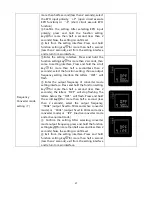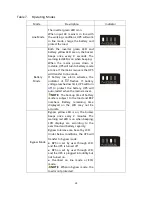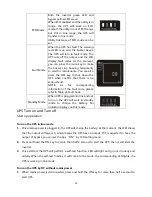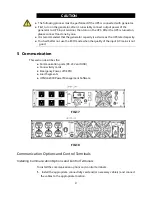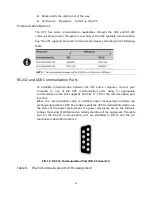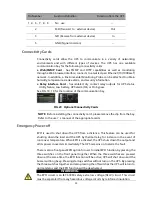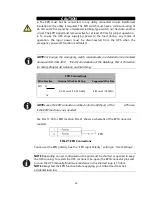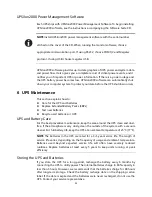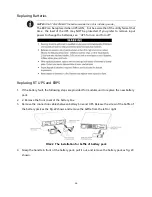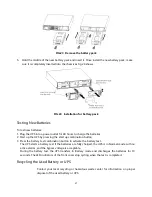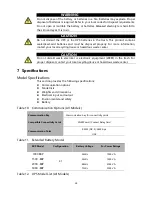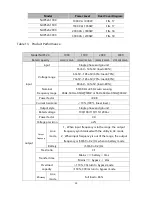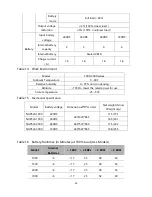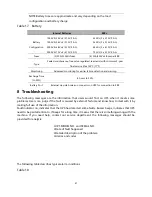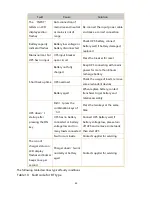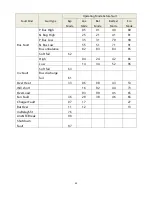
41
NOTE Battery times are approximate and vary depending on the load
configuration and battery charge.
Table 17.
Battery
Internal Batteries
EBPs
Battery
Configuration
1000 VA: 24 Vdc (2,12V, 9 Ah)
1500 VA: 36 Vdc (3,12V, 9 Ah)
2000 VA: 48 Vdc (4,12V, 9 Ah)
3000 VA: 72 Vdc (6,12V, 9 Ah)
24 Vdc (2 x 2,12V, 9 Ah)
36 Vdc (2 x 3,12V, 9 Ah)
48 Vdc (2 x 4,12V, 9 Ah)
72 Vdc (2 x 6,12V, 9 Ah)
Fuses
(2) 30A/250Vdc fuses
(4) 30A/250Vdc fuses per EBP
Type
Sealed, maintenance-free, valve-regulated, lead-acid, with minimum 3-year
float service life at 25°C (77°F)
Monitoring
Advanced monitoring for earlier failure detection and warning
Recharge Time
(to 90%)
8 hours to 90%
Battery Port
External six-pole Anderson connector on UPS for connection to EBP
8
Troubleshooting
The following messages are the information that users would find on UPS when it meets some
problems. Users can judge if the fault is caused by external factors and know how to deal with it by
making full use of the information.
Fault indicator on, indicates that the UPS has detected some faults. Buzzer beeps, indicates that UPS
need to be paid attention to, if beeps for a long time, it means that there is something wrong with the
machine. If you need help, contact our service department, the following messages should be
provided for analysis:
◆UPS MODEL NO. and SERIAL NO.
◆Date of fault happened
◆Detailed description of the problem
◆Alarms and codes
The following table describes typical alarm conditions.
Table 18.

